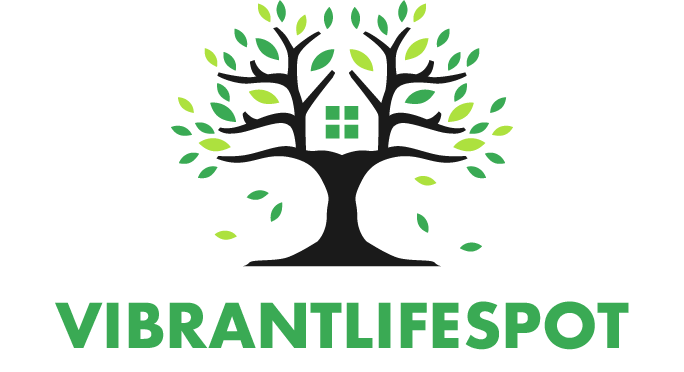Life moves fast. Between work, social commitments, and the constant stream of information from our phones, it’s easy to feel like there’s no time to simply breathe. Many people believe productivity means always being busy, but constant motion can leave us drained, stressed, and disconnected from what truly matters. The art of slowing down is about intentionally stepping back, reclaiming your time, and finding joy in the present moment.
Why Slowing Down Matters
When we rush through life, we miss the small details that make it beautiful—a kind smile from a stranger, the way sunlight filters through the trees, or the taste of a fresh cup of coffee. Slowing down allows you to experience these moments fully, which can boost happiness and reduce stress. Studies also show that constant busyness increases cortisol levels, which over time can harm both mental and physical health.
Step One: Challenge the “Always On” Mentality
We live in a culture that glorifies hustle, often equating busyness with worth. But being constantly occupied doesn’t necessarily mean we’re making progress—it can mean we’re distracted. Slowing down means questioning whether every commitment is truly necessary and giving yourself permission to rest without guilt.
Step Two: Start Your Day Gently
Instead of waking up and rushing into emails or chores, give yourself a few moments of quiet. This could be stretching, journaling, or simply sitting with your coffee and letting your mind wake up naturally. Beginning the day slowly sets a calmer tone that carries into the hours ahead.
Step Three: Practice Single-Tasking
Multitasking feels productive, but it often leads to mistakes, stress, and a lack of focus. By single-tasking—focusing on one thing at a time—you work more efficiently and enjoy the process more. Whether you’re cooking, working, or talking with a friend, give that moment your full attention.
When we rush through life, we miss the small details that make it beautiful—a kind smile from a stranger, the way sunlight filters through the trees, or the taste of a fresh cup of coffee. Slowing down allows you to experience these moments fully, which can boost happiness and reduce stress. Studies also show that constant busyness increases cortisol levels, which over time can harm both mental and physical health.
Step One: Challenge the “Always On” Mentality
We live in a culture that glorifies hustle, often equating busyness with worth. But being constantly occupied doesn’t necessarily mean we’re making progress—it can mean we’re distracted. Slowing down means questioning whether every commitment is truly necessary and giving yourself permission to rest without guilt.
Step Two: Start Your Day Gently
Instead of waking up and rushing into emails or chores, give yourself a few moments of quiet. This could be stretching, journaling, or simply sitting with your coffee and letting your mind wake up naturally. Beginning the day slowly sets a calmer tone that carries into the hours ahead.
Step Three: Practice Single-Tasking
Multitasking feels productive, but it often leads to mistakes, stress, and a lack of focus. By single-tasking—focusing on one thing at a time—you work more efficiently and enjoy the process more. Whether you’re cooking, working, or talking with a friend, give that moment your full attention.

Step Four: Create Buffer Time
One of the easiest ways to slow down is to add extra time between tasks and appointments. If you normally schedule meetings back-to-back, try leaving a 15-minute gap. This gives you time to transition mentally, take a breath, and avoid the constant feeling of being late.
Step Five: Disconnect from Technology Periodically
Digital devices are incredible tools, but they can also keep us in a constant state of stimulation. Setting aside tech-free times—whether it’s an hour before bed or an entire Sunday afternoon—can help you slow your mind and reconnect with yourself and others.
Step Six: Engage in Mindful Activities
Slowing down isn’t just about doing less—it’s about doing things more intentionally. Activities like gardening, walking, cooking, or crafting naturally encourage mindfulness. They help you focus on the present moment, which can be incredibly refreshing after a busy day.
Step Seven: Redefine Success
Part of slowing down is changing how you measure accomplishment. Instead of basing success solely on productivity, include well-being, relationships, and personal growth in your definition. This shift in mindset allows you to prioritize quality of life over constant achievement.
Step Eight: Learn to Say No
If your calendar is always full, it’s hard to slow down. Saying no to commitments that don’t align with your priorities is one of the most powerful ways to reclaim your time. Remember: every “yes” to something unimportant is a “no” to something that truly matters.
Step Nine: Savor Simple Pleasures
A slower life doesn’t have to be boring—it can be deeply fulfilling. Enjoying a home-cooked meal, reading a good book, or watching the sunset can provide a sense of contentment that no amount of rushing can match.
Slowing down isn’t about abandoning ambition—it’s about creating balance. It’s choosing to move through life at a pace that allows you to enjoy it, rather than racing through without noticing the beauty along the way. By single-tasking, setting boundaries, and appreciating simple moments, you can create a more intentional, joyful, and fulfilling life. In a world that constantly tells you to speed up, slowing down can be the most radical—and rewarding—choice you make.
One of the easiest ways to slow down is to add extra time between tasks and appointments. If you normally schedule meetings back-to-back, try leaving a 15-minute gap. This gives you time to transition mentally, take a breath, and avoid the constant feeling of being late.
Step Five: Disconnect from Technology Periodically
Digital devices are incredible tools, but they can also keep us in a constant state of stimulation. Setting aside tech-free times—whether it’s an hour before bed or an entire Sunday afternoon—can help you slow your mind and reconnect with yourself and others.
Step Six: Engage in Mindful Activities
Slowing down isn’t just about doing less—it’s about doing things more intentionally. Activities like gardening, walking, cooking, or crafting naturally encourage mindfulness. They help you focus on the present moment, which can be incredibly refreshing after a busy day.
Step Seven: Redefine Success
Part of slowing down is changing how you measure accomplishment. Instead of basing success solely on productivity, include well-being, relationships, and personal growth in your definition. This shift in mindset allows you to prioritize quality of life over constant achievement.
Step Eight: Learn to Say No
If your calendar is always full, it’s hard to slow down. Saying no to commitments that don’t align with your priorities is one of the most powerful ways to reclaim your time. Remember: every “yes” to something unimportant is a “no” to something that truly matters.
Step Nine: Savor Simple Pleasures
A slower life doesn’t have to be boring—it can be deeply fulfilling. Enjoying a home-cooked meal, reading a good book, or watching the sunset can provide a sense of contentment that no amount of rushing can match.
Slowing down isn’t about abandoning ambition—it’s about creating balance. It’s choosing to move through life at a pace that allows you to enjoy it, rather than racing through without noticing the beauty along the way. By single-tasking, setting boundaries, and appreciating simple moments, you can create a more intentional, joyful, and fulfilling life. In a world that constantly tells you to speed up, slowing down can be the most radical—and rewarding—choice you make.
